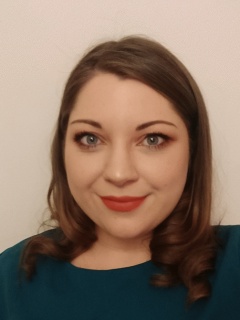“What is the biggest threat to the integrity of your research data?” Some 39% of market research professionals surveyed for the 2015 GRIT report noted dishonesty and lack of actionable insight as the key challenges.
Participant honesty is undoubtedly a hot topic in qual, witness the extensive literature on the psychology of questions and linguistic analysis. Yet the crucial communications with the participant before they enter the room are often left unexplored. These are untapped resources for encouraging openness and honesty. It’s about time we used them to help moderators get the best data from participants.
As a past respondent myself, I have sat in groups, painfully aware how every word was going to be scrutinised by the research team of ten scribbling furiously on my errs and stutters from behind the vast mirror. I felt on the back-foot from the outset: ignorant of what to expect and, most importantly, of what the people behind the mirror ‘wanted me to say’. I felt nervous.
Now I regularly ask myself: could more have been done to prepare me to engage with truthfulness in that moment?
Recruiters
The first step is looking at the recruitment process. We’ve seen the “I am confident and enjoy sharing my opinions with others” questions littered across screeners, with the small hitch that participants know they are being judged on their willingness to talk. This is where the recruiter can put those people skills to work in a positive manner. Starting up a relevant conversation with a participant beforehand, either via phone or online, allows you to judge how well they will be able to think on their feet in the interview.
It is equally a chance to build up trust and prepare the participant for what’s ahead, a crucial step in dispelling nervousness. In 2016, the Department of Psychology at the University of Regina in Canada confirmed fear of the unknown as “the foundation of all fear”. Fear triggers our fight-or-flight stress response and sends our hormones haywire — making it more difficult to open up and recognise our own truths.
Viewing facilities
The environment in which your research takes place plays a similarly vital role in allaying fear. Comfortable facilities can help make participants feel more at ease, alongside ensuring that the room layout is congruent with the purpose of the research. For example, low tables, cushions and armchairs could nurture more colloquial conversation, while a boardroom setup can stimulate activity collaboration or mirror an office environment. Whichever format, remember that food and drinks aren’t just to impress… it’s been proven time and time again that participants are more likely to be relaxed around food, even if they aren’t actually in the process of eating it!
The other key question that comes to mind when discussing room formats is what to do about that giant, one-way mirror, the elephant in the room in more ways than one. I have worked with clients who prefer participants to face away from it so as not to remind them that they are being observed. A 1983 study by Gibbons and Gerard, however, found that people tend to be more truthful when facing it, the theory being that we don’t like to watch ourselves lie.
It also seems that we don’t like being watched while we lie. Participants are already under the encouraging eye of their moderator but there are some supporting tricks that viewing facilities can use to encourage honesty. A 2006 study by a Newcastle University team showed 300% increases in ‘honesty box’ donations from canteen customers when a poster of a pair of eyes was placed above the box, as opposed to a poster of flowers.
Eyes as decoration encourage people subconsciously to behave more honestly because we feel that we are being ‘watched’. It’s the same psychology as the reason behind decals of police in shop windows. By looking into how décor affects respondents in these ways, we could make small changes that could noticeably influence participant openness.
Clients
Unlike the participants, the observer’s role is to go unseen. Clients — believe it or not — play a part in ensuring moderators can get the best from their participants, most notably during the 15-20 minutes prior to the group when participants might see them around the facility. A 2009 study by Lawrence University’s Professor Peter Glick confirmed that the way you dress affects how others view you and, in a research context, this may well influence the way participants answer. We believe the phrase ‘Out of sight, out of mind’ works best for the client’s relationship with the participants.
What next?
Every link in the chain counts when it comes to participant honesty. It is essential for us to work together as a well-oiled machine, collaborating over the shared goal of nurturing excellent participants in order to create actionable, accurate insights. No more should we leave the burden entirely on the moderator’s shoulders. Could starting this conversation be the first step to enhanced quality of research in the qualitative sphere so that, one day, we can shout from the rooftops about our endless quest for betterment — as one voice?


